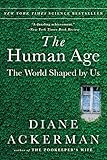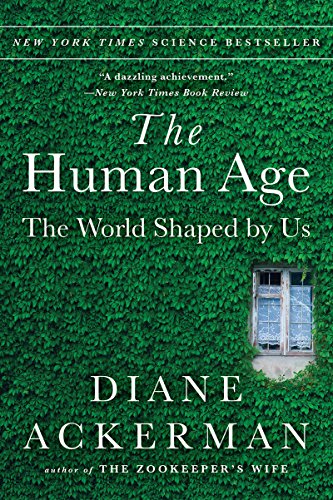Last year, as I wrapped up writing my biography of Constance Fenimore Woolson, a writer who battled gender discrimination in her own day and has been unjustly forgotten in ours, I grew increasingly aware of how women continue to be sidelined in the literary world, thanks to the work of VIDA. Then the National Book Award’s nonfiction longlist came out, and I was astonished to see that only one book, out of 10, was by a female author. Reading the Mayborn study, which revealed that only 20 percent of prizes in nonfiction over the past 20 years have gone to female authors convinced me that the NBA’s gender imbalance was not an anomaly.

 I wondered in a piece here at The Millions whether fewer women wrote nonfiction, which some have called a guy’s club. However, I came to the conclusion that there were plenty of important nonfiction books being written by women that deserved to be considered for the prize. In fact, some of the books I highlighted did go on to win other prestigious prizes: Diane Ackerman’s The Human Age won the PEN Henry David Thoreau Award for Nature Writing, Elizabeth Kolbert’s The Sixth Extinction won the Pulitzer Prize in General Nonfiction, and Diane Allen won the Francis Parkman Prize for Our Declaration: A Reading of the Declaration of Independence in Defense of Equality.
I wondered in a piece here at The Millions whether fewer women wrote nonfiction, which some have called a guy’s club. However, I came to the conclusion that there were plenty of important nonfiction books being written by women that deserved to be considered for the prize. In fact, some of the books I highlighted did go on to win other prestigious prizes: Diane Ackerman’s The Human Age won the PEN Henry David Thoreau Award for Nature Writing, Elizabeth Kolbert’s The Sixth Extinction won the Pulitzer Prize in General Nonfiction, and Diane Allen won the Francis Parkman Prize for Our Declaration: A Reading of the Declaration of Independence in Defense of Equality.
This year’s judges of the National Book Award seem to agree that women’s nonfiction writing is abundant and prize-worthy. The 2015 nonfiction longlist includes seven female-authored books, out of 10, the largest percentage of female nominees in the prize’s history. The longlist also contains two books by people of color, compared to last year’s one. What is even more interesting than the numbers, however, is the types of books on the list.
This year’s longlist could not be more different than last year’s in ways that go beyond gender and race but also suggest why this year’s list of authors is more diverse. Last year’s list, as well as those of the past few years, were heavy in genres and topics typically dominated by (white) men: national and military history; biographies of men, especially presidents; and economic or war reportage. This year there are no biographies at all on the list, and only two histories, although both take unconventional approaches to their subjects:
- Martha Hodes’s Mourning Lincoln explores the private responses to Lincoln’s death, rather than its public meaning.
- Susanna Moore’s Paradise of the Pacific: Approaching Hawai’i focuses on the indigenous politics and culture of Hawaii.

 Last year, only one memoir, a genre in which women writers have been rather prolific, made the longlist (and of the past 50 nonfiction books nominated, only 4 had been memoirs). This year, fully half of the nominated books can be loosely classified as memoirs, according to The New Yorker, three of them by women. (All are described below.) A related genre, the essay, is represented by one book on this year’s list:
Last year, only one memoir, a genre in which women writers have been rather prolific, made the longlist (and of the past 50 nonfiction books nominated, only 4 had been memoirs). This year, fully half of the nominated books can be loosely classified as memoirs, according to The New Yorker, three of them by women. (All are described below.) A related genre, the essay, is represented by one book on this year’s list:
- Michael Paterniti’s Love and Other Ways of Dying.
Last year I particularly noted the disappointing lack of books that blurred genres or categories. I speculated that women may be more likely to write about history, science, or culture from a more personal perspective, injecting memoir into the usual nonfiction fare. This year’s list contains three such works, two by women, one by a man of color, and all of which suggest the power of writing about larger issues through a personal lens:
- Ta-Nehisi Coates’s Between the World and Me is a letter to his son, and ostensibly America, attempting to explain America’s perilous neuroses about race through memoir, reportage, and history.
- Sy Montgomery’s The Soul of an Octopus: A Surprising Exploration into the Wonder of Consciousness is unconventional science reportage that recounts the author’s friendship with an octopus and documents the emotional lives of the species as well.
- Carla Power’s If the Oceans Were Ink: An Unlikely Friendship and a Journey to the Heart of the Quran combines memoir and conversations that take the reader into the history and theology of the Quran.
Two other works on the list that defy easy categorization and offer innovative approaches to the genre are:
- Cynthia Barnett’s book Rain is classified by its publisher as a science book but is subtitled A Natural and Cultural History, suggesting the ways it also crosses genre boundaries.
- Sally Mann’s Hold Still: A Memoir With Photographs could be described as a kind of collage of text, photographs, letters, diaries, and reproductions of saved items, such as the notes she wrote on a negative’s envelope.

 Another indication that this year’s nominees are untraditional is that four of the authors are better known for their work in other genres or art forms: Sally Mann is a photographer; Susanna Moore is a novelist; and two are poets:
Another indication that this year’s nominees are untraditional is that four of the authors are better known for their work in other genres or art forms: Sally Mann is a photographer; Susanna Moore is a novelist; and two are poets:
- Tracy K. Smith, author of Ordinary Light: A Memoir
- Michael White, author of Travels in Vermeer: A Memoir
Overall, it’s fair to say that this year’s list more accurately reflects the diversity of nonfiction as a genre and points toward innovations that promise to invigorate it. It is tempting to believe that the National Book Awards took the many criticisms of last year’s list into account. One sign of their effort to do things differently this year may be the fact that three of the five judges are women (last year there were two), one of whom is African-American (the same as last year). Even more telling, however, is the fact that the chair of this year’s panel is one of the authors conspicuously absent from last year’s list: Diane Ackerman.

 I concluded my essay last year with the hope that “the subtle biases that govern our understanding of literary value” will seem to us one day a quaint reminder of an earlier era. I had no idea my hope would be so quickly realized, at least for this one award for this one year. Such biases are still the norm, however. A recent study of the major fiction awards over the past 15 years determined that novels by and about men dominated, while those focusing on a female protagonist won zero Pulitzer Prizes, only two Man Booker Prizes, two National Book Awards, and one NBCC Award. There is still much to be done to ensure that awards in all genres are not gender biased and that judges can recognize merit outside the usual boundaries of the white male perspective. My hats off to the judges of this year’s NBA nonfiction award for accomplishing that goal.
I concluded my essay last year with the hope that “the subtle biases that govern our understanding of literary value” will seem to us one day a quaint reminder of an earlier era. I had no idea my hope would be so quickly realized, at least for this one award for this one year. Such biases are still the norm, however. A recent study of the major fiction awards over the past 15 years determined that novels by and about men dominated, while those focusing on a female protagonist won zero Pulitzer Prizes, only two Man Booker Prizes, two National Book Awards, and one NBCC Award. There is still much to be done to ensure that awards in all genres are not gender biased and that judges can recognize merit outside the usual boundaries of the white male perspective. My hats off to the judges of this year’s NBA nonfiction award for accomplishing that goal.











